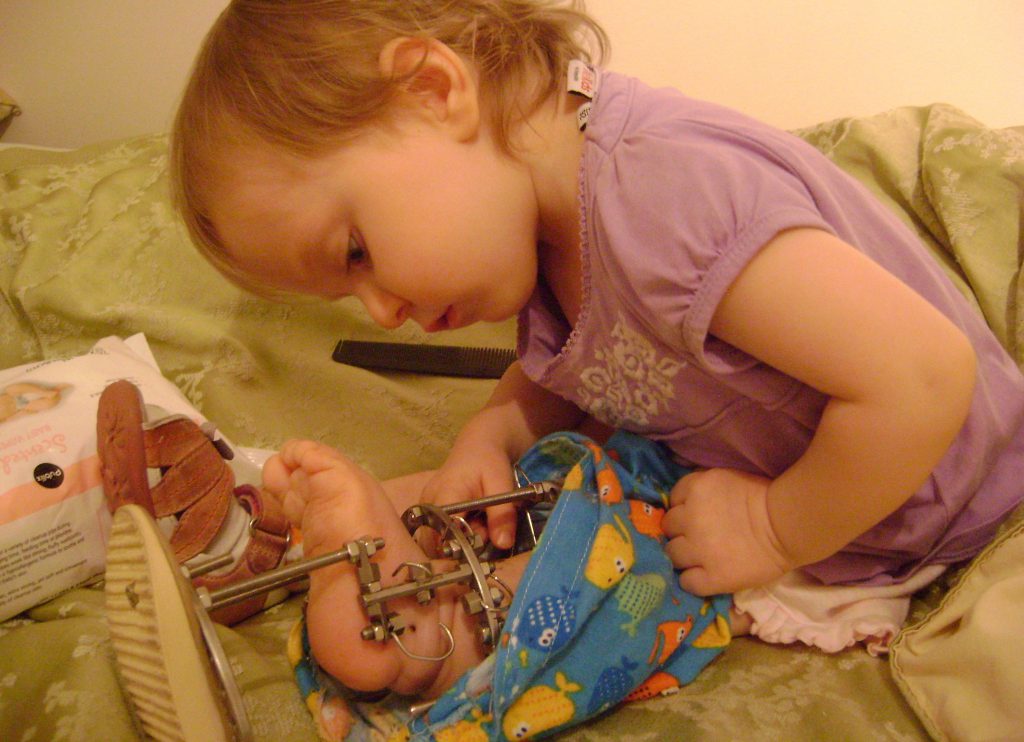Managing an external fixator or taking care of an external fixator can be challenging. This section will help you care for the fixator and help reduce stress and anxiety.

Lengthening
Lengthening with an external fixator is done by manually turning the fixator. An orthopedic technologist at the Paley Institute will perform the first lengthening and will instruct the patient and caregivers how to do the subsequent lengthenings each day. Lengthening, or distraction, is typically done four times per day, a quarter of a millimeter each time. Each time of lengthening is called a turn. It is important to divide the turns throughout the day, such as one at breakfast, one at lunch, one at dinner, and one before bed.
Extension Bar
Some patients will be given an extension bar to use with their fixator. This is used to maintain maximum extension so as to avoid developing a knee contraction. The extension bar should be worn throughout the night and two to three times during the day for one hour. Using the extension bar throughout the day helps to maintain the knee in maximum extension as well as decreasing the pain and discomfort the patient endures in the evening when the extension bar is placed for the night.
Weight-Bearing Precautions
Many patients are weight-bearing as tolerated with the external fixator. This means they can walk normally on the fixator, but they cannot run or jump. Weight-bearing status should be confirmed by Dr. Paley or one of the PAs after surgery. If you have any questions or concerns about your weight-bearing precautions, please contact a physician or physician assistant as soon as possible.
Things to do with the fixator
- Encourage the patient to move their toes frequently to reduce swelling and prevent stiffness.
- Elevate the leg on a pillow and apply ice to reduce swelling.
- Inspect the skin at the pin sites and look for any changes in temperature, color, or texture.
- Clean pin sites daily as instructed by physician’s assistant or orthopedic technician – refer to Pin Care section.
- Inspect pin sites daily for signs of infection.
- Report any concerns or questions to Dr. Paley, such as loose screws or pins.
Things not to do with the fixator
- Do not get the fixator wet until cleared by Dr. Paley.
- Never use objects such as a pencil, ruler, toothbrush, or food items to scratch around fixator or pin sites. Such items can get stuck inside the pin sites and scratching can cause severe skin damage.
- Do not alter the fixator or frame in any way.
- Do not do more turning or manipulating than what has been prescribed and taught to you.
- Never remove the fixator yourself.